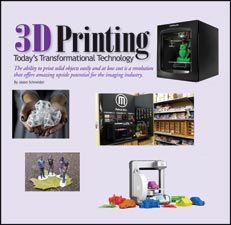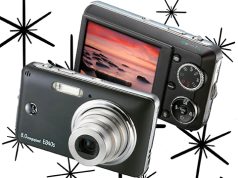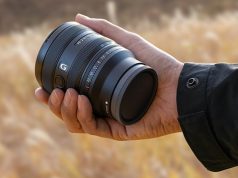
The rapidly emerging technology of 3D printing may be as significant a technological transformation as the first interchangeable parts and production lines were to the second stage of the Industrial Revolution.
Unlike the CNC (computer numerical control) machines used in industry that employ subtractive manufacturing techniques to automatically carve away materials from billet blocks to create precision parts, 3D printing is an additive process. It creates finished parts (or molds to create them) by building up successive layers of material.
A common method for doing this is Fused Deposition Modeling, or FDM, which employs a tiny extruder nozzle that sprays hot plastic (ABS or PLA, a biodegradable organic polymer) onto a two-dimensional surface. Much like an inkjet printer sprays ink on paper, this process creates thin, fast-drying sections of a part before moving vertically along the Z-axis to spray print the next layer.
Home 3D printers such as MakerBot Replicators are typically FDM machines that cost from about $1,000 to a few thousand dollars. The fact they can create an almost infinite variety of objects using computer programs has helped to motivate an enthusiastic coterie of early adopters—even though the small size of the forming beds of home-based machines limit their output to small toys and trinkets.
Other 3D printing methods include: 1. Syringe extrusion, which uses virtually any suitable material that can flow through an outlet jet and can be used to create decorative foods, candies and cheeses, as well as inedible objects made from cement, clay and epoxy. 2. Stereolithography (SLA) and PolyJet technology are popular methods that create 3D parts from photo-curable resins (like those used by dentists). They use a UV laser to solidify the resin, building up successive layers to form the object. 3. Direct Metal Laser Sintering (DMLS), which can be used with extruded wire or practically any metal alloy. 4. Selective Laser Sintering (SLS) that forms parts in a bed of powered material using a laser beam to fuse each successive layer and works with various powdered metals, and Selective Laser Melting (SLM), which melts the material instead of fusing its granules.
Significantly, all additive 3D printing processes produce very little waste, and any unused material can usually be recycled for use in the next project. Also, the uncanny accuracy of metal parts made using DMLS, SLS and SLM often obviates the need for additional machining—a major incentive for anyone who needs to make precision parts in small quantities.
Up to this point, most of the 3D design software by the industry leaders has been developed for engineers and entails a steep learning curve. And while some of the consumer programs that target home printer owners are much more user friendly, they can be challenging for average users. DIY kits and simpler 3D printing systems rapidly are being developed. But for the time being, consumers will probably opt to have their 3D printing projects handled by regional stores, including photo specialty retailers that can take their designs and print them with commercial-grade machines the average person couldn’t afford. Such outlets already exist, including Shapeways, 3D Systems and MakerBot’s Thingiverse.
For relatively simple things like toys and jewelry, home-based 3D printing may be a satisfying and affordable solution, but creating a complex piece of engineering using 3D printing can be time-consuming and costly. The higher the resolution needed, the greater the number of layers required, and as the saying goes, time is money. Increased printing speeds are being pursued to increase precision and bring costs down.
It is also noteworthy that considerable progress has been made in addressing the cost problems of 3D printing. A 3D printing machine that cost $20K in 2010 can now be purchased for about $1,000, and the $500-or-less home unit is becoming a reality. Since most of this technology was developed 25 years ago, many patents have expired and costs are projected to decrease dramatically going forward. Indeed, according to industry experts, making small plastic parts in great quantities using 3D printing is already cost effective with industrial extrusion methods because expensive machined steel molds are not required.
In short, 3D printing is one of the most disruptive technologies ever created, and if the imaging industry is to prosper going forward, it is up to us to take full advantage of its virtually limitless possibilities.
Many thanks to Dave Searle, editor in chief, for permission to quote liberally from his excellent article, 3D Printing, which appeared in Motorcycle Consumer News.
The 3D Printing Explosion: Notes from All Over
At the DI Symposium held at the Alexandria Center in New York on June 24, 2014, there was an informative freewheeling discussion of the implications and opportunities offered by 3D printing moderated by Fujifilm’s Joellyn Gray. The participants included Enrique Muyshondt, president of desktopFab; Walter Alcorn, vice president, Environmental Affairs, CEA; Shawn DuBravac, chief economist, CEA; and Hugh Evans, vice president, Corporate Development, 3D Systems.
Some of the key points to emerge: The price points for the least expensive home 3D units are approaching the $500 level and are likely to fall even further. The fact that 3D gaming is coming to smartphones and other devices will spur interest in 3D printing due to a convergence in easy ideation and familiarity with the techniques, though the adaptation curve is likely to be “discontinuous.” Three main areas of innovation are design (fit), architecture (configuration) and fashion, and engineering with an emphasis on increased use of robotics and enhanced 3D printing techniques.
Materials scientists and chemists are working intensively on making “the next great powder that can solidify” for printing, because “if you can powderize it you can print it.” And the applications range from ceramics to metals to edibles. Wood pulp and biologic materials, including human skin and replacement organs, are being explored, raising concerns about the regulation of materials and environmental sustainability.
3D Printing Retail Models
How will this fit into current and future retailing and marketing models? The panel discussion addressed the end-to-end experience of users, concluding that the primary objective was to make it easy for people to ideate and print at all levels—including home printing or the “Kinko’s” service bureau model. It was suggested that metal objects such as replacement parts were more likely to be created by service bureaus. Such things as food and toys would more likely be printed at home, with branded companies and studios making designs and printing programs available to customers to “get the file and print it at home.”
Some of the coolest applications of 3D printing mentioned by the panelists: space drones, a child’s face on a doll, eyeglass frames fitted to your face, “perfect fit” shoes based on a 3D scan of your feet, custom sports equipment at affordable prices, medical implants, and custom-designed tools for “personalized” surgery.
It was agreed that making 3D printing more mainstream would entail improvements in design, materials and ease of use. It was noted that it will proceed on parallel tracks of home printing and making 3D items in-store, possibly using 3D photo booths or kiosks. Currently, the best 3D photo printers can achieve 20-micron spacing in the layers, the resolution being largely determined by the number of slices. Since creating a larger number of thinner slices is a slower process, the goal is to create faster machines with 10-micron spacing, which are coming soon.
While improvements in 3D printing are inevitable, retailers are struggling to take advantage of the opportunities and provide adequate floor space. However, they are evidently getting the message and are projected to devote twice the space to 3D printing in 2015 as they’re doing now, to provide consumers with “a cool new thing to get feet in the door.” The operative paradigm for retailers is that service industries can now become manufacturers. And manufacturers can reduce their design cycle by making adjustments on the fly, because “complexity is free” and you can achieve the long-sought goal of “designing globally and producing locally.”
Artec Group’s Shapify.Pro Service Lets Retailers Offer 3D Selfies
Shapify.Pro is a new iteration of Artec’s 3D selfie technology designed for small businesses and retailers who want to provide customers with scale figurines of themselves, their kids, etc. Like the original Shapify.Me, the 3D selfie kit for individual use, a Shapify.Pro kit uses a Microsoft Kinect sensor array to scan customers in 3D. The scans are uploaded to Shapify’s website, and monochrome or color plastic figurines are delivered to the retailer or customer within five days.
The benefits of Shapify.Pro for small businesses include a $999 printing credit—matching the initial investment of $999 for the Shapify.Pro kit—and special rates designed to allow 3D selfie businesses to become profitable. Shapify.Pro offers two new larger sizes in addition to the 1:20 scale figures: 1:15 and 1:12 models.
For $999, a Shapify.Pro account gives retail partners access to special Pro partner rates of $40 per 1:20 (small size) printed figurine, $80 per 1:15 (medium) figure, and $140 for each 1:12 (large) model. At SRPs of $79 for one small, $129 for one medium and $199 for one large figurine, Artec estimates retailers can make almost $5,000 per month by selling two small and three medium figures every work day, and one large every other.
Shapify.Pro kits include a Shapify.pro account, a Shapify-branded backpack and jacket, a scanning pad so customers know where to stand during scanning, and discounts for 3D printed figurines at Shapify partner print shops.
Amazon Jumps into 3D Printing with On-Demand Store
Amazon’s 3D Printing Store is a place where consumers can select and customize products that are then 3D printed and delivered. Launched at the beginning of 2014, it features dozens of items, including jewelry, trinkets, a bobble-headed doll that can be personalized, home décor and accessories, toys and art pieces. In keeping with its business model, Amazon doesn’t actually 3D print anything but partners with companies such as Sculptco, MixeelLabs and 3DLT to “bring the store to life.” In addition to traditional product photos, the site includes a 3D image of each object that visitors can click and drag to rotate, and customizable options are available.
New Matter Unveils $199 3D Printing Device
While MakerBot may have put 3D printing on the map, New Matter is aiming to bring it to the mass market with an end-to-end 3D printing solution for less than $200. It’s slated to be available by early 2015. Backed by Idealab, the start-up launched an Indiegogo crowd-funding campaign to offer the unit at a price competitive with current DIY kits. The company is working with and backed by Frog Design, the acclaimed design team that has worked with iconic names like Apple, Microsoft, GE and Sony. The result is the MOD-t, a basic but attractive 16x12x15-inch 3D printer with a translucent removable cover. Frog Design is also helping New Matter to build a suite of companion apps.
Stratasys Multi-Material 3D Full Color Printer
The new Objet500 Connex3 is claimed to be the only printer that creates brilliantly colored prototypes using a range of multi-material components—as many as 46 colors in a single prototype. It can build combinations of rubber-like, rigid and clear components into one model. It offers a choice of “hundreds of composite materials blended right in the 3D printer,” so users get exactly the properties they need. Options include digital ABS, simulated polypropylene and biocompatible material for surgical or orthopedic devices. In short, the Objet500 Connex3 “expands your maximum number of base resins to 3 and adds color so the possibilities expand exponentially.”
3D Printing Space to Double at 2015 International CES
The Consumer Electronics Association (CEA) announced that the 3D printing footprint at the 2015 CES will double the size of its 2014 footprint. 3D printers are expected to cover 14,000 square feet of display space at the 2015 event, up from 7,200 square feet at the 2014 CES. It will feature more than 30 different companies showcasing advancements in 3D printing technology and marketing opportunities. According to the CEA’s most recent forecast, current sales of desktop 3D printers are expected to reach 67,000 units and generate $76M in revenue, an increase of 43% over 2013. “The vast expansion of 3D printing at CES speaks to the category’s potential to become a major disruptor in the global economy,” said Karen Chupka, CEA’s senior vice president of International Corporate Business Strategy.





